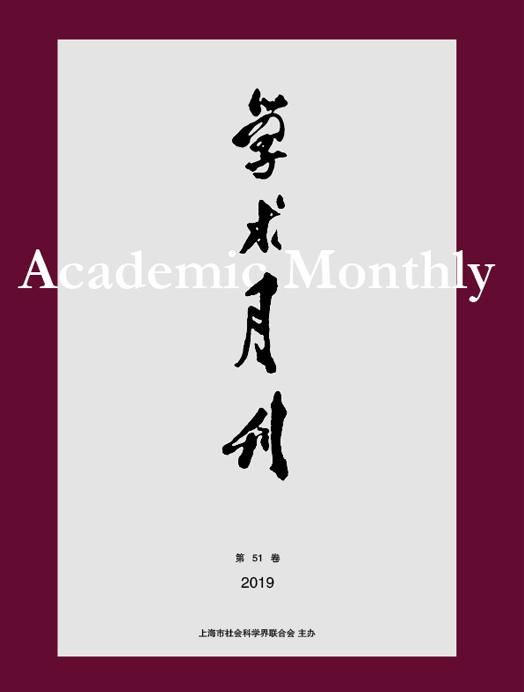Citation:
Yiwei SONG. The Textual Circulation and Symbolic Meaning of “ying-te-na-xiong-nai-er”[J]. Academic Monthly, 2021, 53(6): 205-216.

The Textual Circulation and Symbolic Meaning of “ying-te-na-xiong-nai-er”
-
Abstract
L’Internationale is the political symbol of proletarian revolution all over the world. In 1887, Eugène Pottier published the poem titled “L’Internationale” in his personal collection. Although there existed differences between the original manuscript and the published version, both of them were dedicated to the International Workingmen’s Association as a hymn. In 1902, L’Internationale was translated in Russian by А. Я. Коц. In Lenin’s opinion, L’Internationale was “the hymn to all the proletariat.” After 1920, L’Internationale was introduced into China from both France and the Soviet Union, and there emerged two Chinese translations respectively by Lie Bei, Zhang Taoyu, Geng Jizhi and Zheng Zhenduo, Qu Qiubai, Xiao San and Chen Qiaonian, among whom, Qu Qiubai was the first person who transliterated the keyword “internationale” as “ying-de-na-xiong-nai-er” in Chinese. L’Internationale played an important role in Chinese revolution, with the translations of the lyric and their practical uses embodying the collective wisdom of the Chinese Communists. In 1962, People’s Daily published the official Chinese version of L’Internationale, and it was regarded as a symbol of international communism.
-

-
References
-
Access
-
-
[1]
Yuezhi XIONG
. The Function of Urban Agglomeration of Shanghai and the Founding of the Communists Party of China. Academic Monthly,
2021, 53(6): 5-18.
-
[2]
Donghua ZHOU
. China’s Status as a Major Power and Discourse Power in International Affairs after the Breakout of the Pacific War. Academic Monthly,
2021, 53(7): 202-216.
-
[3]
Yingsheng LI
. The Exploration of Social Policy since the Founding of the Communist Party of China. Academic Monthly,
2021, 53(6): 148-159.
-
[4]
Zhongqiu YAO
. Why CCP Created a New Model for Human Advancement. Academic Monthly,
2022, 54(10): 70-78, 133.
-
[5]
Jintai ZHOU
. Form Shanglin Garden to Shanglin Fu: The Natural History Space of the Han Empire and Its Writing. Academic Monthly,
2021, 53(10): 182-193.
-
[6]
Feng LUO
. On the Origin of the CPC’s Thoughts of Governance of China. Academic Monthly,
2021, 53(6): 108-120.
-
[7]
LIU Shouying
. Political Economy in the Communist Party of China's Theoretical Creation. Academic Monthly,
2024, 56(3): 53-69.
-
[8]
Linfang ZHU
. The Inner Logic of the Changes of the Party Constitution in the Past Hundred Years. Academic Monthly,
2021, 53(10): 118-129.
-
[9]
An CHANG
. “Interior” and “Exterior” of the Text of the Chinese Constitution. Academic Monthly,
2020, 52(12): 79-96.
-
[10]
WU Guoyi
. No.7 Chengyuli:The Precise Birthplace of Communist Manifesto. Academic Monthly,
2023, 55(10): 194-200.
-
[11]
Zao ZHANG
. Liang Zongdai and Symbolist Poetics. Academic Monthly,
2019, 51(1): 135-149.
-
[12]
. . Academic Monthly,
2016, 48(05): 110-120.
-
[13]
. . Academic Monthly,
2016, 48(11): 43-48.
-
[14]
Xiaobai CHU
. On the Family-Nation Discourse and Its Symbolic Structure during the Anti-Foreign-Religion Movement in Late Qing Dynasty. Academic Monthly,
2021, 53(3): 146-159.
-
[15]
Haiqing WEN
. Reanalysis on the Culture Implications of the Typified Numbers with 7 in the Mongolian and Yuan Times. Academic Monthly,
2021, 53(2): 195-205.
-
[16]
Hongjie CHEN
. Symbolic Construction of Judicial Justice: Between Cognition and Norm. Academic Monthly,
2021, 53(6): 137-147.
-
[17]
,
. . Academic Monthly,
2016, 48(03): 176-184.
-
[18]
,
. . Academic Monthly,
2018, 50(01): 96-105.
-
[19]
,
. . Academic Monthly,
2022, 54(6): 209-216.
-
[20]
Zai LIANG
, Nan WANG
. Studies on China and the 21st Century International Immigration. Academic Monthly,
2021, 53(8): 123-134.
-
-



 沪公网安备 31010102003103号
沪公网安备 31010102003103号 DownLoad:
DownLoad: